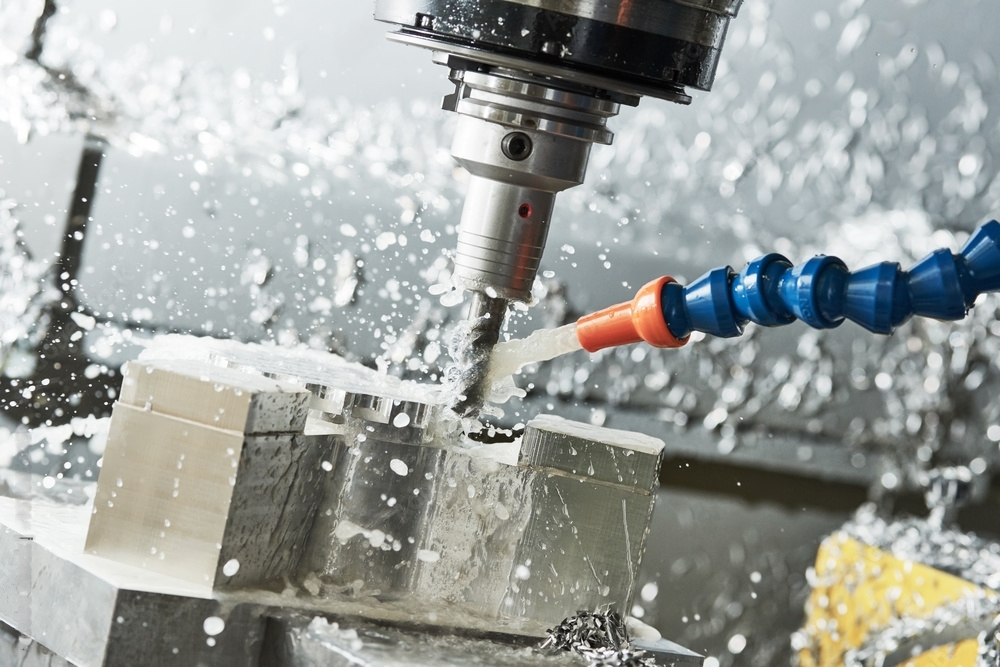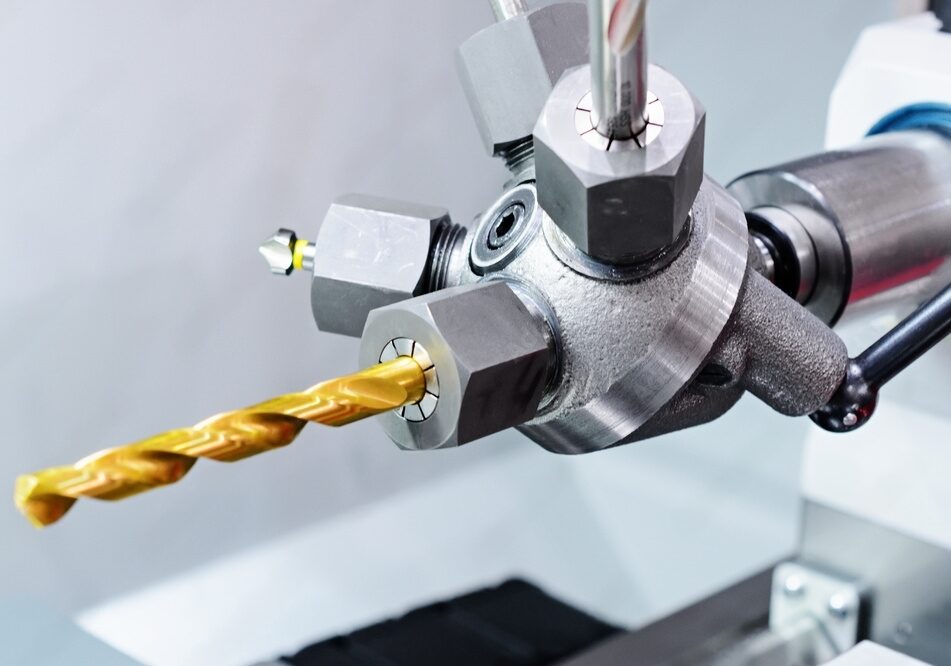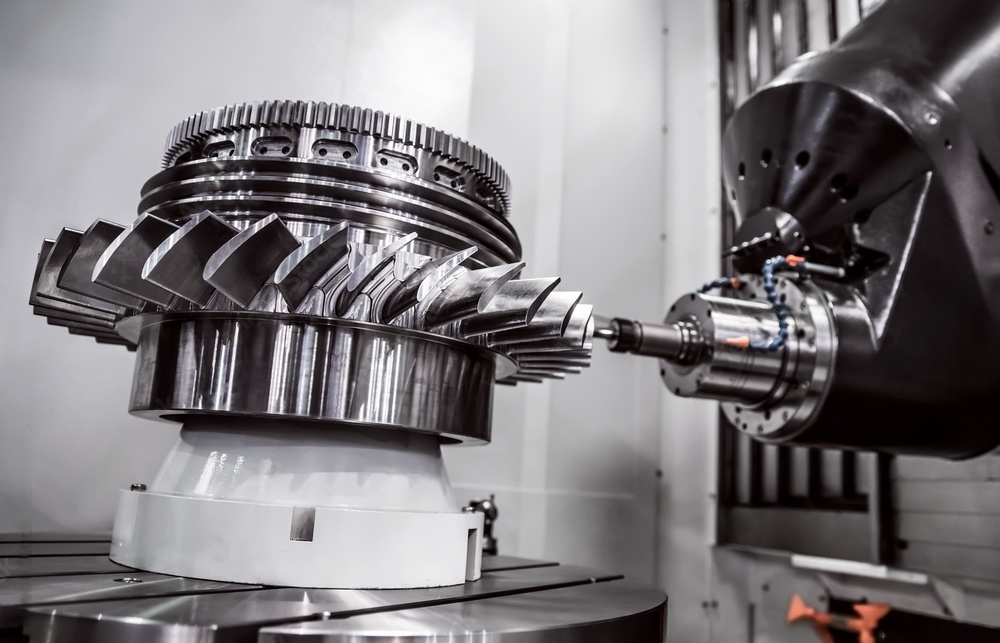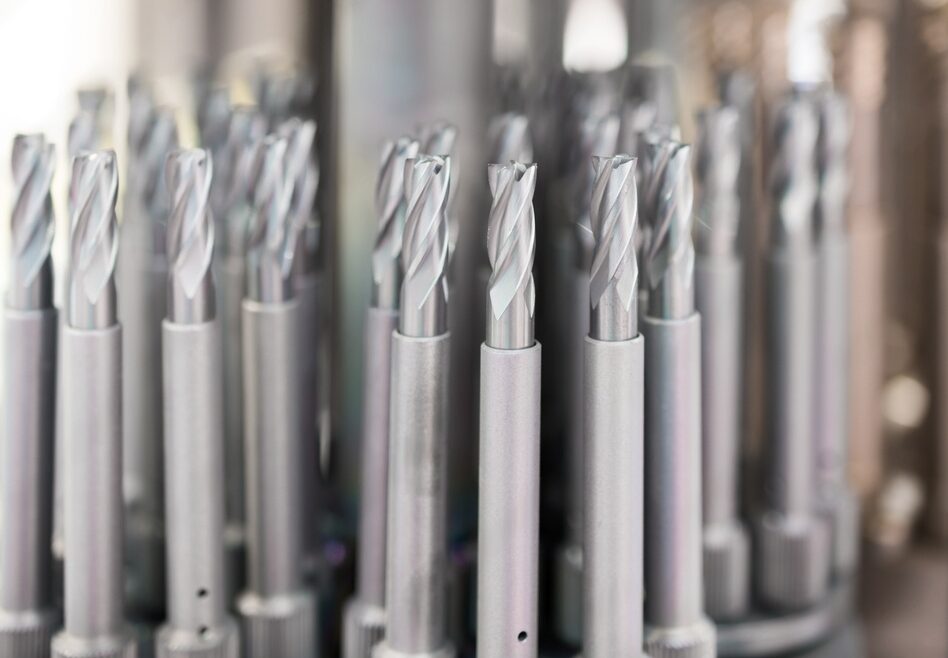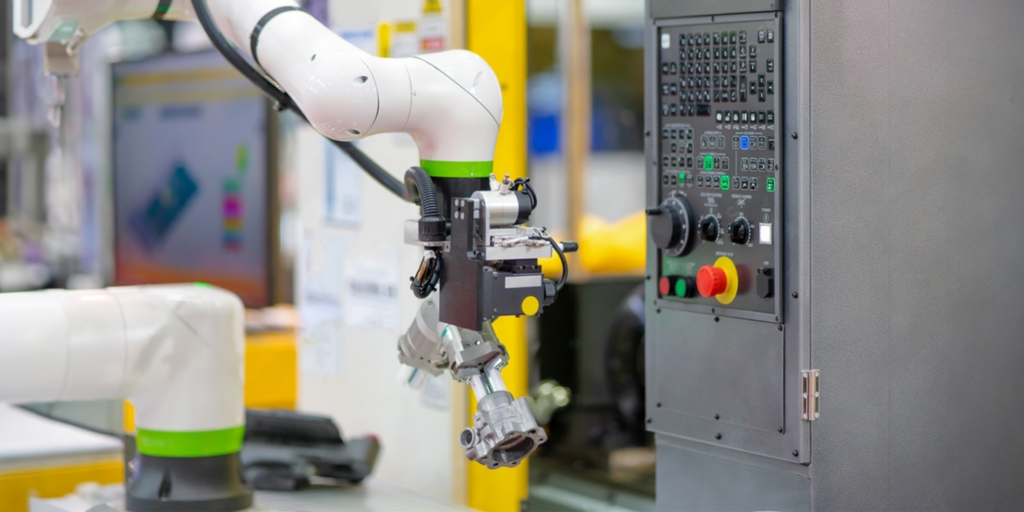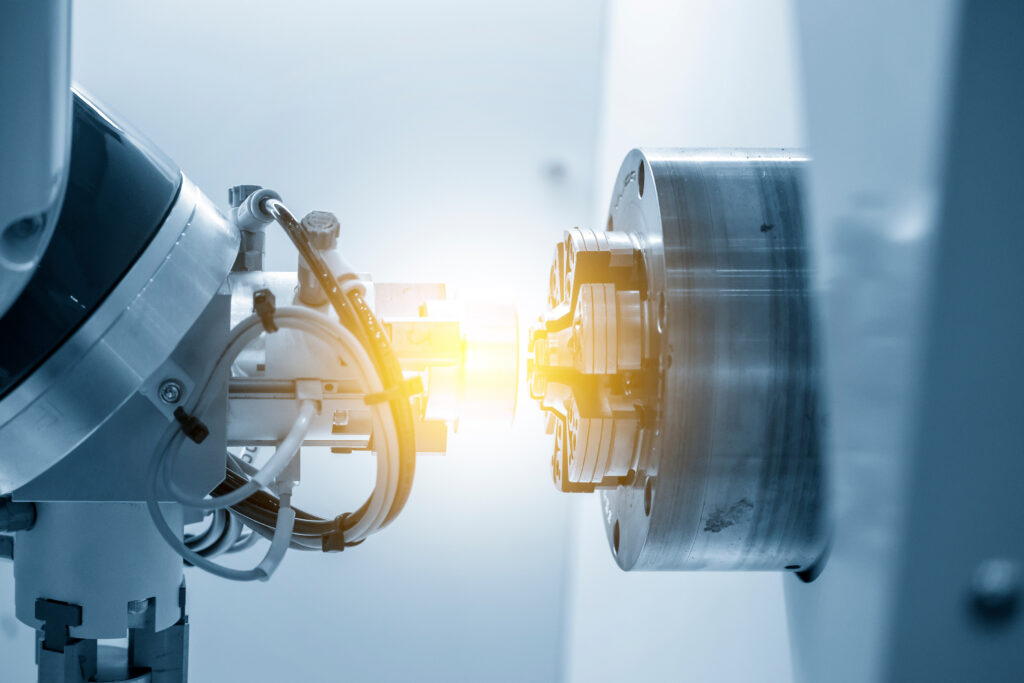Cold-Weather Tooling: A Machinist’s Guide to Winter Precision
Leave a CommentYou may also like:
Turnkey Solutions: The What, Why, and How
Insights from OEM Tool Suppliers: Adapting to Manufacturing Challenges
Industry 5.0: Mastering the Future
How Can Machinists Preserve Precision in Cold Weather?
As machinists, precision is key to ensuring the quality and accuracy of our work. Unfortunately, cold weather can create unique challenges that impact our ability to maintain that precision, especially when it comes to cold weather tooling. Cold temperatures, known for causing materials to contract, make it challenging to uphold tool dimensions.
They can also increase the risk of tool breakage due to increased brittleness and changes in material properties. In this comprehensive guide on cold weather tooling, we’ll explore the nuances and provide essential tips for selecting, maintaining, and utilizing tools effectively in winter conditions. Navigate the challenges of cold weather machining while preserving precision in your workshop with these expert insights.
Understanding the Impact of Cold Weather
Brittleness Matters
One of the most significant challenges of working with tools in cold weather is the increased risk of tool breakage due to increased brittleness. Materials like steel or cast iron become more brittle in cold temperatures, making them more prone to cracking or breaking. To address this challenge, it is essential to opt for tool materials known for their toughness, such as carbide or coated tools designed to withstand colder conditions.
Material Contraction
Cold weather can cause materials to contract, leading to problems maintaining tool dimensions. This can result in parts that are out of spec, leading to costly rework and lost productivity. To overcome this challenge, it is crucial to regularly check tool dimensions and compensate for any variations due to temperature changes. Implementing precise measurement techniques can help ensure consistency in machining output.
Selecting the Right Tools for Winter Success
Winter-Grade Tool Coatings
One way to enhance tool performance in cold environments is to choose tools with winter-grade coatings. These coatings offer increased resilience in cold environments and protect against the adverse effects of low temperatures. For example, TiAlN coatings can help to reduce friction and heat buildup in colder temperatures.
Cutting Edge Geometry
It is essential to opt for tooling with robust cutting-edge geometry suited for winter machining. Consider geometries that provide efficient chip evacuation and reduce the risk of chip buildup, especially in colder conditions. For example, tools with sharp edges and low rake angles can help reduce chip buildup.
Thermal Stability
Tools with high thermal stability can help maintain their structural integrity and cutting performance even in the face of temperature variations. For example, tools made from high-speed steel or tungsten carbide can maintain their shape and hardness in colder temperatures.
Real-World Examples of Cold Weather Tooling Challenges
One real-world example of how cold weather can impact tooling is in the oil and gas industry. The extreme cold temperatures in the polar regions can cause oil well drilling equipment to malfunction, leading to costly downtime and repairs. To overcome this challenge, drilling companies must use specialized tools designed for cold weather conditions.
Another example is in the automotive industry, where cold weather can impact the machining of engine parts. For example, cold temperatures can cause engine blocks to contract, leading to problems maintaining the proper dimensions of the cylinder bores. To overcome this challenge, automotive manufacturers must use specialized tools and techniques to maintain precision and accuracy in colder temperatures.
Embracing Precision in the Winter Workshop
Cold-weather tooling demands a proactive and informed approach. By understanding the impact of cold temperatures on tools and implementing the right selection, maintenance, and usage strategies, machinists can navigate the winter season with confidence.
It is essential to use winter-grade tool coatings, opts for tooling with robust cutting-edge geometry, and prioritize tools with high thermal stability to maintain precision in colder temperatures. Implementing regular inspection routines and temperature-controlled storage can also help maintain tool longevity. By embracing precision in your winter workshop, you can optimize tool performance and ensure successful machining operations even in the coldest conditions.
Racer to Provide CNC Machines to U.S. Army
Leave a CommentYou may also like:
Dubai Airshow 2023: RACER’s Aerospace Solutions
RACER Receives $1.4 Million Boost from Canada’s Federal Economic Development Agency
Recognized by Feedspot in Top CNC Blogs
$2.67M Contract for CNC Lathes for U.S. Army
Racer Machinery International was awarded through CCC a contract for up to $2.67 million USD to supply the U.S. Army Contracting Command (ACC) with two Computer Numerical Controlled (CNC) vertical turning lathes manufactured by Racer Machinery International.
“CCC is pleased to work with Racer Machinery International and support Canadian manufacturing through the Canada-U.S. Defence Production Sharing Agreement (DPSA)” – Diane Montambault, VP of Operations, CCC.
Racer Machinery International: Pioneering CNC Solutions for U.S. Army’s Defense Manufacturing
For over 60 years, Racer Machinery International has offered turnkey CNC vertical turning lathes, as well as metal cutting engine lathes, machining centers and industrial saws to automotive manufacturers, and the Canadian and U.S Armed Forces.
The U.S. Army relies on CNC machines for heavy duty machining of medium to large parts of defense vehicles and other military devices. For this contract awarded to CCC and Racer Machinery International, the U.S. Army requested machines that included a Renishaw part and tool probe system, live spindle, through spindle coolant, C-axis rotary table, automatic tool changer, automatic pallet changer, linear pallet system that can fit 12 pallets and remote pendants.
CCC is the Canadian designated contracting authority for purchases over USD $250,000 by the U.S. Department of Defense (U.S. DoD). Through its free U.S. DoD Prime Contractor service, CCC partners with Canadian businesses like to Racer Machinery International to supply the U.S. DoD with made-in-Canada solutions. Last year alone, CCC helped Canadian businesses to secure US DoD contracts totaling $885 million CDN, which supported approximately 5,700 jobs across the country.
“We’re proud to partner with CCC to deliver high-quality North American-built machinery to the U.S. Army Contracting Command.” – Mark Barszcz, Racer Machinery International Inc.
The Rise of 5 Axis Machining
Leave a CommentYou may also like:
Advances in Multi-Axis Machining: Evolving Precision
Manufacturing Complex Components: Insights from Racer
Mechanics of CNC Machines: Mastering the Craft
Is 5-Axis Machining Revolutionizing Manufacturing?
In the ever-evolving landscape of precision manufacturing, the ascent of 5-axis machining stands as a revolutionary leap forward. This cutting-edge technology has reshaped the possibilities of CNC machining, offering unparalleled versatility and precision. Join us on a journey as we explore the rise of 5-axis machining, unveiling a new dimension in the world of manufacturing.
Understanding 5-Axis Machining
Traditionally confined to the constraints of three axes – X, Y, and Z, CNC machining faced challenges when dealing with complex surfaces and intricate geometries. Enter 5-axis machining, introducing two additional rotary axes – A and B. This dynamic enhancement allows for unprecedented freedom of movement and the ability to approach a workpiece from multiple angles.
The fundamental advantage lies in its ability to move the cutting tool in five directions. This freedom enables machining from virtually any angle, eliminating the need for repositioning the workpiece. The result? Intricate and complex parts can be manufactured with fewer setups, reducing production time and enhancing overall efficiency.
Advantages
- Precision Redefined
- Single Setup Mastery
- Increased Tool Access
5-axis machining brings numerous advantages to precision manufacturing. With its ability to move in five directions, it ensures superior precision and accuracy, making it a top choice for intricate geometries. This technology reduces setups and boosts efficiency by completing parts in a single setup. The extended range of machining angles allows for the creation of complex surfaces, and the continuous tool contact results in a smoother finish. Additionally, 5-axis machining optimizes tool life, enhances versatility for producing customized parts, and reduces material waste. Its simultaneous movement of multiple axes speeds up production, making it valuable for meeting deadlines and managing large volumes.
Applications
- Aerospace Engineering Marvels
- Medical Precision at Its Finest
- Automotive Innovation Unleashed
Future Trends and Innovations
As adoption surges, the trajectory points towards continuous innovation. Integration with advanced software, enhanced automation, and real-time monitoring systems are shaping the future of this technology. These advancements aim to streamline processes, reduce downtime, and empower manufacturers with unprecedented control over the machining environment.
A New Horizon in Manufacturing
The rise marks a paradigm shift in precision manufacturing. What was once considered complex or unattainable is now achievable with a level of precision and efficiency that was previously unimaginable. As industries across the spectrum embrace this technology, we find ourselves at the dawn of a new era in machining. It has not only elevated the standards of precision manufacturing but has also opened doors to a realm of possibilities, where intricate designs and complex geometries are brought to life with unprecedented ease. The ascent of this machining is not just a technological advancement; it’s a transformative journey that propels us into a future where precision knows no bounds. Are you ready to explore this new horizon in manufacturing?
Speeds and Feeds: Troubleshooting Guide
Leave a CommentYou may also like:
Turnkey Solutions: The What, Why, and How
CNC Machine Builder: Unveiling Their Role and Expertise
Insights from OEM Tool Suppliers: Adapting to Manufacturing Challenges
Mastering Speeds and Feeds – How?
CNC machining is a work of art that requires precision and finesse. The symbiosis of speeds and feeds holds the key to success. These critical factors not only shape tool longevity but also determine the surface quality of machined products and the overall efficiency of the manufacturing process. So, if you’re looking to take your CNC machining skills to the next level, you’ve come to the right place! In this blog, we’ll demystify the complexities of speeds and feeds and empower you to refine your craft.
Common Issues and Solutions
Are your tools exhibiting premature wear or breakage?
Solution: Don’t panic, it’s time to dive into the intricacies of speed and feed settings. Adjustments can extend tool life significantly. For instance, consider using high-speed steel tools for softer materials and carbide tools for harder materials. And, if you want to take things a step further, you can implement tool coatings tailored to the specific material and machining requirements. These coatings enhance tool durability and include titanium nitride (TiN) coatings that reduce friction and wear, and titanium carbonitride (TiCN) coatings that provide better heat resistance.
Is your finished product lacking the desired smooth surface?
Solution: We get it, precision lies in the details of speed and feed configurations. Fine-tune these parameters to achieve optimal surface finishes, eliminating the need for additional post-processing steps. For example, reducing the feed rate and increasing the spindle speed can improve the surface finish. Let’s face it, the artistry of machining begins with the right settings.
Is excessive heat impacting both tools and workpiece quality?
Solution: Heat management is an art within CNC machining. Delve into the intricacies of speed and feed optimization to control heat generation. Achieving this balance not only extends tool life but also ensures the quality of the machined workpiece remains uncompromised. For example, using coolant during machining can reduce the temperature and prevent workpiece warping.
Are unwanted vibrations and noise disrupting your machining process?
Solution: We know that the precision dance of machining can be disrupted by chatter and vibration. So, it’s time to explore different techniques such as trochoidal milling or adjust speed and feed settings to minimize these disturbances. The result? A smoother, quieter, and more stable machining process. For example, using a shorter tool or reducing the radial depth of the cut can reduce chatter.
Is sluggish material removal affecting overall efficiency?
Solution: It’s time to gear up and optimize the speeds and feeds. Fine-tune the settings to ensure a balance between precision and speed, making each cut more efficient and productive. For example, increasing the feed rate can improve the material removal rate, but it must be balanced with the spindle speed to prevent tool wear.
Tips for Optimization
Utilize Machining Software
Tip: Embrace the power of technology by utilizing machining software. These digital tools calculate and optimize speeds and feeds based on material properties, tool specifications, and machine capabilities. It’s like having a virtual assistant for precision machining, ensuring every cut is calculated for optimal results. For example, Autodesk HSM and Mastercam are popular machining software tools.
Conduct Rigorous Testing
Tip: Like a musician fine-tuning an instrument, machinists should conduct systematic testing when implementing new speeds and feeds. Document the results meticulously and adjust parameters based on performance. Rigorous testing is the roadmap to finding the perfect harmony in machining. For example, testing different speeds and feeds on scrap material before machining the actual workpiece can save time and money. So, let’s put on our lab coats and get experimenting!
Continuous Monitoring
Tip: The machining journey is a dynamic one, especially when working with new materials or intricate geometries. Regularly monitor the process and make incremental adjustments to maintain optimal performance. It’s like navigating a ship, making small course corrections to stay on the right path. For example, using sensors to monitor temperature, tool wear, and vibration during machining can help make data-driven decisions. So, let’s keep a close eye on things and steer our way to success!
Conclusion
In the intricate tapestry of CNC machining, mastering speeds and feeds is a journey worth undertaking. At Racer Machinery International, we don’t merely provide cutting-edge machines; we are committed to simplifying and enriching the machining experience. So, let’s embark on this journey together, where precision meets artistry, and CNC machining becomes a seamless blend of technology and creativity.
These critical factors shape tool longevity, the surface quality of machined products, and the overall efficiency of the manufacturing process. This blog aims to demystify the complexities, providing detailed solutions to common challenges faced by machinists in the realm of speeds and feeds. Let’s delve deep into the nuances of CNC machining, empowering enthusiasts to refine their craft.
Multi Axis Milling: Beyond 3 Axis
Leave a CommentYou may also like:
Advances in Multi-Axis Machining: Evolving Precision
Manufacturing Complex Components: Insights from Racer
Mechanics of CNC Machines: Mastering the Craft
Is Multi-Axis Revolutionizing Machining?
In the ever-evolving landscape of machining, Racer Machinery International stands as a beacon of innovation, propelling the industry forward. This blog embarks on a journey into the realm of multi-axis milling, a technological leap that has redefined the possibilities of machining.
Join us as we explore the advantages and diverse applications of Racer’s state-of-the-art multi-axis machines, unlocking a new era of versatility for tackling complex machining tasks.
Advantages of Multi-Axis Milling
- Enhanced Precision and Accuracy
- Reduced Set-Up Time
- Increased Tool Access
- Optimized Toolpath Strategies
Multi-axis milling brings a game-changing dimension to CNC machining, offering a host of advantages that significantly impact precision and efficiency. One of its standout benefits lies in its ability to tackle complex geometries with ease. Traditional three-axis machines may struggle with intricate shapes, but multi-axis milling unlocks the potential to create highly detailed components, catering to the evolving demands of industries that require precision and sophistication.
Reducing setups is another noteworthy advantage. By enabling the completion of a part in a single setup, multi-axis machines streamline the manufacturing process, saving both time and effort. This not only boosts overall accuracy by minimizing potential errors during setup changes but also enhances productivity, making it an invaluable asset, especially in high-volume production scenarios. The improved surface finish, increased tool life optimization, and long-term cost efficiency further underscore the compelling case for embracing the capabilities of multi-axis milling in the CNC machining landscape.
Applications
Aerospace Components
Soar into the skies with us as we highlight the pivotal role of multi-axis milling in crafting complex aerospace components. Racer’s machines excel in meeting the demanding precision requirements of the aerospace industry, pushing the boundaries of what’s achievable in the heavens.
Medical Implants and Devices
Step into the realm of life-changing innovations as we explore how multi-axis milling contributes to the production of intricate medical implants and devices. Racer’s machines play a vital role in shaping the future of healthcare by maintaining tight tolerances and precision.
Automotive Prototyping
Rev up your enthusiasm for innovation in automotive manufacturing. This segment showcases how milling accelerates the pace of prototyping and the production of complex components. Racer’s machines are integral to advancing automotive manufacturing capabilities, where precision meets speed.
Die and Mold Manufacturing
In the world of intricate designs and flawless finishes, multi-axis milling takes center stage in die and mold manufacturing. Explore the advantages as we discuss how Racer’s machines excel in creating intricate molds and dies with a superior surface finish, setting new standards in precision molding.
Conclusion
As we conclude this exploration, the message is clear—Racer Machinery International’s commitment to innovation knows no bounds. The redefined possibilities offered by multi-axis machines set the stage for a new era in the machining industry. This blog showcases Racer’s machines, empowering machinists for challenging projects with newfound confidence.
The Evolving Role of Engineers: Robotics and Automation
Leave a CommentYou may also like:
The Ontario OEM Tool Supplier Advantage with RACER
Industry 4.0 and RACER: Driving Manufacturing Transformation
CNC Customization: The Potential of Manufacturing
How do engineers lead manufacturing robotics?
In the ever-advancing landscape of manufacturing, engineers are playing an increasingly pivotal role, one that aligns with the industry’s changing dynamics. It’s a role that not only involves designing and building CNC machines but also steering the charge towards robotics and automation.
In this thought-provoking exploration, we delve into how engineers are at the forefront of developing and implementing robotics and automation technologies in a world where precision machinery, such as CNC machines, is the heartbeat of the industry.
The Marriage of Precision and Automation
The Traditional Landscape
Traditionally, engineering has been associated with the meticulous design and construction of machinery, where precision and accuracy were the foremost objectives. The engineer’s role was to craft machines that delivered flawless performance, often in the form of CNC machines, the backbone of manufacturing.
The Changing Horizon
However, the landscape is evolving, and it’s evolving rapidly. The demand for efficiency, scalability, and cost-effectiveness has ushered in the age of robotics and automation. This is where engineers find themselves at the forefront of a revolution. Their responsibilities now encompass not only crafting the CNC machines themselves but also integrating them into a world of automated processes.
The OEM’s Journey
Original Equipment Manufacturers (OEMs) have traditionally been associated with creating high-quality machinery, often catering to specific industries. Engineers working for OEMs are tasked with creating CNC machines that seamlessly blend with automated systems, optimizing productivity and reducing human intervention.
Customization and Integration
Engineers in the CNC builder sector are not merely building machines; they are crafting solutions. Each CNC machine is designed with the vision of seamlessly integrating into an automated production line. CNC builders might specialize in creating machines for a specific industry, such as aerospace or automotive manufacturing.
The Future of Engineering Beyond Precision
As engineers redefine their roles, the emphasis has shifted from mere precision to a broader horizon. It’s about marrying the precision of CNC machines with the efficiency of automation. The engineer’s toolkit now includes software development, sensor integration, and real-time data analysis, allowing them to design CNC machines that not only produce high-quality components but also communicate, adapt, and optimize their own processes.
A Holistic Approach
The evolving role of engineers extends beyond the confines of their workstations. It’s about understanding the entire production ecosystem, from the CNC machine on the factory floor to the data analytics software in the cloud. Engineers working for CNC builders and OEMs are also customizing CNC machines to perform specific tasks, making them adaptive to the needs of industries that range from automotive manufacturing to precision engineering.
Challenges and Opportunities
The integration of robotics and automation into CNC machine systems brings a new set of challenges. Engineers must navigate complex systems, ensuring that automation enhances, not hinders, the precision and quality for which CNC machines are renowned. However, it’s not just about challenges; it’s also about boundless opportunities. Engineers have the canvas to innovate, pushing the boundaries of what CNC machines can achieve. The evolving role encourages creativity, problem-solving, and the development of systems that bring forth a new era of manufacturing.
The Impact on the Workforce
As the manufacturing industry increasingly adopts robotics and automation technologies, it’s essential to consider the potential impact on the workforce. While these technologies offer significant benefits in terms of efficiency and productivity, they also have the potential to displace human workers. Engineers must consider how to strike a balance between the benefits of automation and the need for human workers.
Conclusion
In the age of CNC machine building and OEMs, the role of engineers is undergoing a profound transformation. It’s a transformation that sees engineers not only as architects of precision but also as pioneers of automation and robotics. In this exploration, pondering the future of manufacturing, questions arise about how engineers evolve in a world where CNC machines and automation are inseparable partners.
Concluding, we anticipate the innovations engineers will lead, redefining precision and automation in CNC machine building and beyond.
